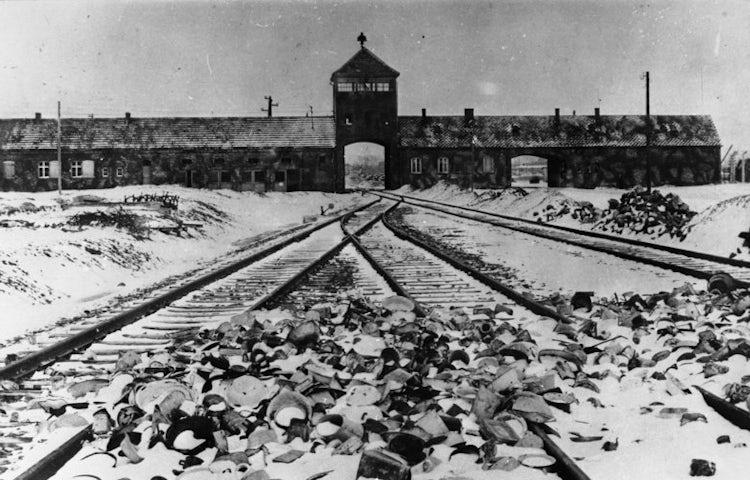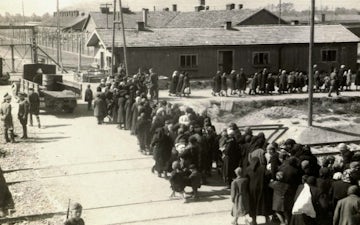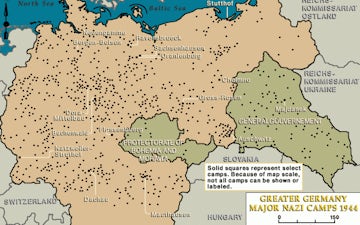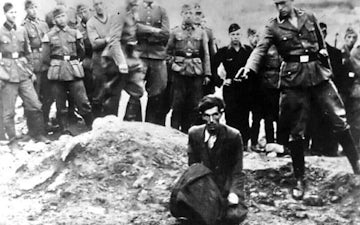
Located in German-occupied Poland, Auschwitz was the largest of many concentration camp complexes built by the Nazis. It consisted of three main camps and almost 50 sub-camps: Auschwitz I, a concentration camp, Auschwitz II-Birkenau, the largest part of the Auschwitz camp system, which included both a concentration camp and a killing center, and Auschwitz III-Monowitz, located near the construction site of the synthetic rubber factory built by IG Farbenindustrie.
Between 1940 and 1945, at least 1.3 million people, most of them Jews, were deported to the Auschwitz camp complex, of whom 1.1 million were killed. Among the victims were approximately 1 million Jews, 74,000 non-Jewish Poles, 21,000 Roma, 15,000 Soviet POWs, and between 10,000 and 15,000 others, including at least 43 homosexuals.
Although first established to hold Polish political prisoners, the Nazis began to implement the Final Solution there from March 1942. For this purpose, they constructed gas chambers and crematoria at the Auschwitz II-Birkenau site.
Auschwitz was the centre of the destruction of European Jewry and its survivors include many famous names. More than any other camp, the survivors of Auschwitz – Elie Wiesel, Primo Levi, Imre Kertesz and many others – described the Holocaust and ensured that Auschwitz became its defining symbol. In 2005, 27 January – the anniversary of the liberation of Auschwitz in 1945 – was officially proclaimed International Day of Commemoration in Memory of the Victims of the Holocaust by the United Nations General Assembly.




